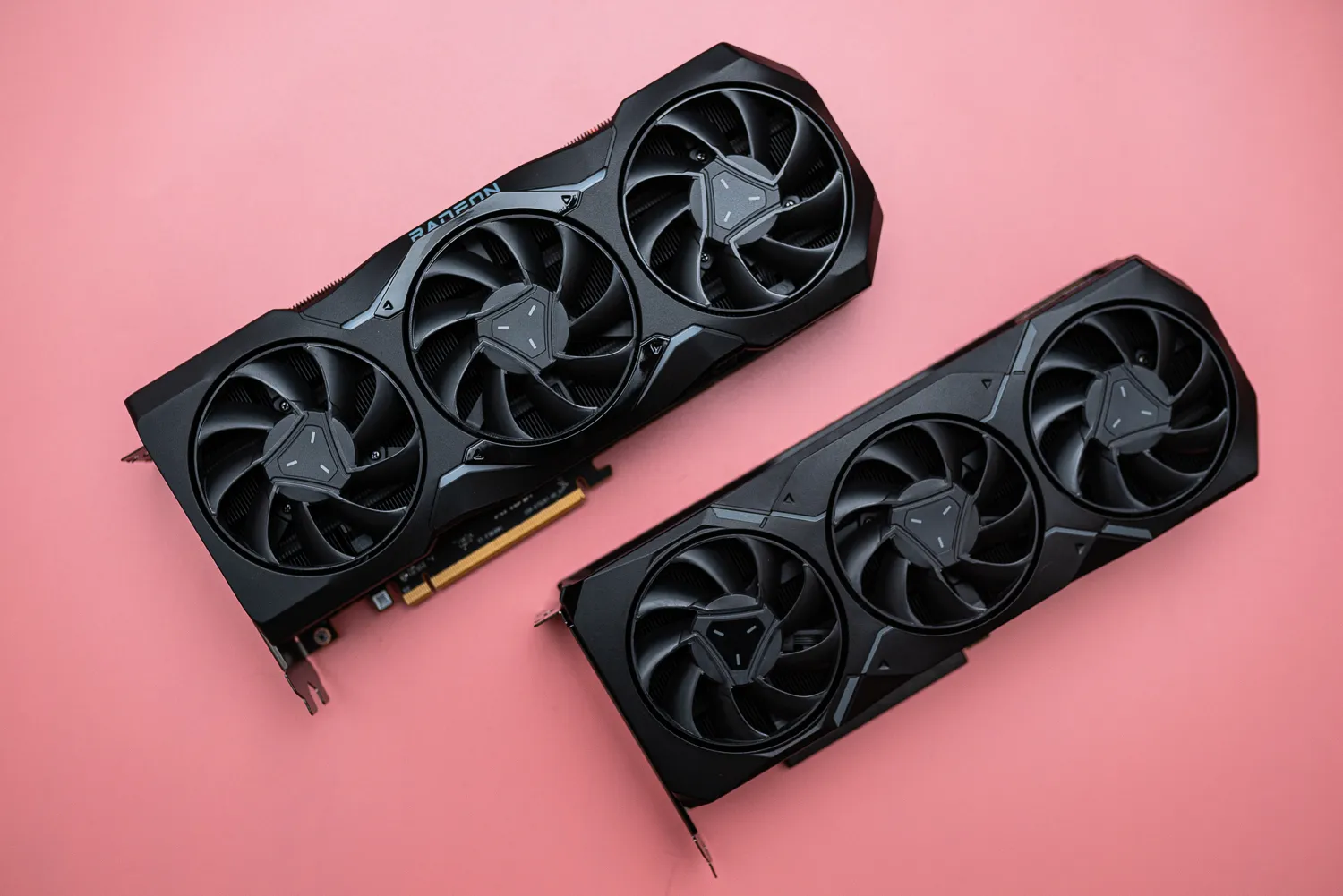AMD сейчас имеет план обогнать DLSS Nvidia.
Недавний тизер от CTO компании AMD подразумевает использование искусственного интеллекта в скором времени для технологии увеличения разрешения.
 AMD’s FidelityFX Super Resolution 3 (FSR 3) has been gaining traction lately, but it seems like big things are in store for the technology in 2024. According to Mark Papermaster, the chief technology officer of AMD, this year will be a game-changer for the company in terms of artificial intelligence (AI), including upscaling. This leaves us wondering: what kind of improvements can we expect from AMD’s next-generation RDNA 4 graphics cards?
AMD’s FidelityFX Super Resolution 3 (FSR 3) has been gaining traction lately, but it seems like big things are in store for the technology in 2024. According to Mark Papermaster, the chief technology officer of AMD, this year will be a game-changer for the company in terms of artificial intelligence (AI), including upscaling. This leaves us wondering: what kind of improvements can we expect from AMD’s next-generation RDNA 4 graphics cards?
During a recent appearance on the No Priors Podcast, Papermaster dropped some hints about what’s on AMD’s agenda for 2024. The focus is on AI, a move that won’t come as a surprise considering Nvidia has been taking a similar approach.
“This, for us, is a huge year because we spent so many years developing hardware and software capabilities for AI. We just completed AI-enabling in our entire portfolio, so cloud, edge, PCs, embedded devices, [and] gaming devices. We’re enabling our gaming devices to upscale using AI. And 2024 is really a huge deployment year for us,” said Mark Papermaster.
💡 Enhanced Content: AI Takes Center Stage in AMD’s 2024 Plans
AMD’s commitment to AI is clear, and it seems like they are ready to take it to the next level. The mention of gaming devices and upscaling specifically suggests that AMD might be looking to enhance FSR with AI capabilities. While Nvidia’s DLSS 3 and Intel’s XeSS both rely on hardware-powered AI upscaling, AMD’s FSR 3 does not. Instead, FSR uses a temporal upscaling technique without the need for specialized hardware. This accessibility is a major advantage, as FSR is open-source and compatible with graphics cards from all major vendors. However, it may limit AMD’s ability to improve the technology compared to its competitors.
- Новый MacBook Air M3 Сильное обновление! 😲💻
- Создатель текста в изображение Google сталкивается с вызовами.
- Супер-предложение на 15-дюймовый MacBook Air Всё, что вам нужно знать!
🔍 Q&A: How Does AMD’s FSR Compare to Nvidia’s DLSS and Intel’s XeSS?
Q: How does AMD’s FSR 3 technology differ from Nvidia’s DLSS and Intel’s XeSS? A: While all three technologies aim to provide better performance and image quality, they approach upscaling in different ways. FSR uses a temporal upscaling technique without relying on specialized AI hardware, making it accessible to a wider range of graphics cards. On the other hand, DLSS and XeSS utilize dedicated AI processors to upscale games, resulting in more precise and detailed upscaling. So, while FSR may not match the performance of DLSS or XeSS, its widespread compatibility gives it an edge in accessibility.

When it comes to upscaling, Nvidia has been dominant so far. FSR 3 is a significant improvement over its predecessor, but its adoption is still relatively slow, with only a handful of games supporting it. In contrast, Nvidia’s DLSS 3 has become a key selling point for its GPUs, boosting the performance of cards like the RTX 4060 and the RTX 4070 Super.
Papermaster seems keenly aware of AMD’s current standing in the AI space and hints at the company’s plans to change the narrative. He said, “I think we’re often unknown in the AI space. Everyone knows our competitor, but we not only want to be known in the AI space, but based on the results, based on the capabilities, and the value we provide, we want to be known (over the course of 2024) as the company that really enabled broad AI across that breadth of applications. […] I think this is also the year that that expanded portfolio of applications comes to life.”
🚀 Future Developments: AI Takes AMD to New Heights
With these subtle hints, it looks like AMD is gearing up to integrate AI into FSR. Since the conversation was primarily focused on 2024, we can expect these changes to materialize soon. This could potentially lead to architectural improvements in the RDNA 4 graphics cards, which are slated to launch this year.
As AI continues to advance and play an increasingly important role in various industries, incorporating it into gaming technologies like FSR opens up exciting possibilities. If AMD successfully enhances FSR with AI capabilities, it could effectively level the playing field with Nvidia’s DLSS and Intel’s XeSS. Gamers would undoubtedly benefit from improved performance and visual fidelity, making their gaming experiences even more enjoyable.
“`html
🔗 Ссылки:
- AMD’s FidelityFX Super Resolution 3
- AMD’s Next-Gen RDNA 4 Graphics Cards
- Nvidia RTX 50-Series Graphics Cards
- AMD vs. Nvidia: The Battle Continues
Привет, энтузиасты технологий! Каковы ваши мысли о планах AMD интегрировать искусственный интеллект в FSR? Думаете ли вы, что этот шаг даст им конкурентное преимущество перед Nvidia и Intel? Поделитесь своими мнениями и давайте начнем обсуждение! И не забудьте поделиться этой статьей со своими друзьями в социальных сетях. 🤩
“`






